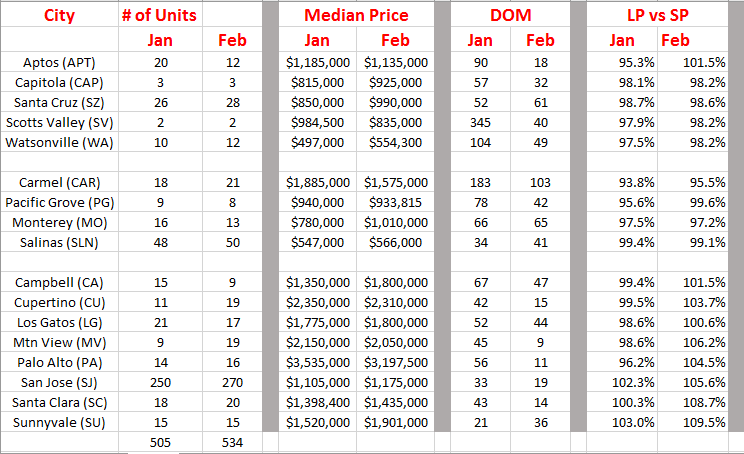March 2020
FED Cuts Interest Rate
The Federal Reserve just cut its benchmark interest rate, but don't expect lower mortgage rates as a result.
The Fed made the rare move to lower the federal funds rate by a half-point to a range of 1% to 1.25% in between its regularly scheduled meetings. The central bank noted that the move was in response to the "evolving risks" the COVID-19 coronavirus outbreak poses to the economy.
The Fed is catching up claims Holden Lewis, an expert at NerdWallet. Mortgages respond to market forces and not to the Fed. The Fed is actually following and not leading when it comes to mortgage rates.
How the Coronavirus Could Affect the Housing Market in 2020
The U.S. housing market is connected to the broader economy in many ways. For instance, when stock markets tumble due to investor anxiety, consumer spending tends to decline along with it. People get nervous about spending large sums of money, such as those required to make a home purchase.
Right now, the nation's real estate markets haven't seen much of an impact from the coronavirus. People are still buying homes, and house values are still climbing in most U.S. cities. But that could very well change in the coming months, as the virus continues to spread and cause concern.
Let's be clear: No one can predict the future with complete accuracy. And there's no reason to panic. (Nothing brings the economy to a halt like unnecessary and irrational fears.) With that being said, we can make an educated guess about what might happen, by using history as a guide.
Read the entire article here
Bay Area home prices regaining momentum
Bay Area home prices have started to pick up with cautious buyers stepping back into the market amid low inventory and steady demand.
The median sale price in January for single family homes rose year-over-year in Santa Clara, San Mateo, Alameda and Contra Costa counties, according to a new Zillow analysis. The biggest risers were in tech-heavy San Mateo, where the median sale price increased 6.3% and the Santa Clara price rose 2.7%.
The median sale price in seven Bay Area counties in January was $865,900. In Santa Cruz county it was $869,500 and in Monterey it was $649,000.
High demand and few homes for sale have been a steady refrain as the region sinks deeper into a housing crunch. Median home values made record gains between 2012 and 2017, before hitting a lull in 2018-19. Longtime homeowners have seen their equity soar, while many would-be homebuyers have remained renters or left the region.
Although prices have regained momentum, the number of sales have dipped as highest in the country listings have pushed many out of the market.
Read the entire article here
Will the weak industry recovery continue
The current economic cycle, the longest in U.S. history, has resulted in palpable confidence in the real estate industry. Still, complacency is the wrong approach; some serious attention should be given to the prospects that the economy could downshift. It appears the economy isn't as robust as many believe. The yield curve inversion that took hold and then deepened early last year leads the list of warning signals. Add in softer housing starts and year-over-year declines in residential permits, and it shows just how fragile the economy has become.
In its latest survey, Zillow disclosed that nearly half of respondents said the next recession will commence in 2020. The main culprit for the housing recession, the organization said, is monetary policy. "The emerging trend for real estate demand in the decade ahead isn't just for softer demand, it's for dramatically softer demand," said one real estate professional interviewed for Emerging Trends.
While a reservoir of optimism remains, there are signs the market is unraveling. The home ownership rate, currently at 64%, is at its lowest level since the 1960s. Single-family pricing has outstripped household incomes, and affordability has reached the breaking point even in markets that previously boasted lower-cost housing.
The current recovery never fully took hold, is nearing its end and may not be wide-reaching enough to pull in aspiring first-time buyers. This leads to a first-ever phenomenon for recoveries: Home purchases arise mostly from purchases by current homeowners, while first-time buyers are largely out of the picture.
Read the entire article here
February Comparisons for the Bay Area, the Central Coast & Santa Cruz
Comments: Total sales declined in Santa Cruz County, stayed the same in Monterey County and increased in Santa Clara. All three counties experienced an increase in the Median Price. Days on the market decreased substantially in most areas possibly due to the fewer new listings. And the list to sale price ratio increased significantly in Santa Clara County, stayed the same in Monterey County and rose a bit in Santa Cruz County yet still under 100%. Display of MLS data is deemed reliable but is not guaranteed accurate by the MLS.


